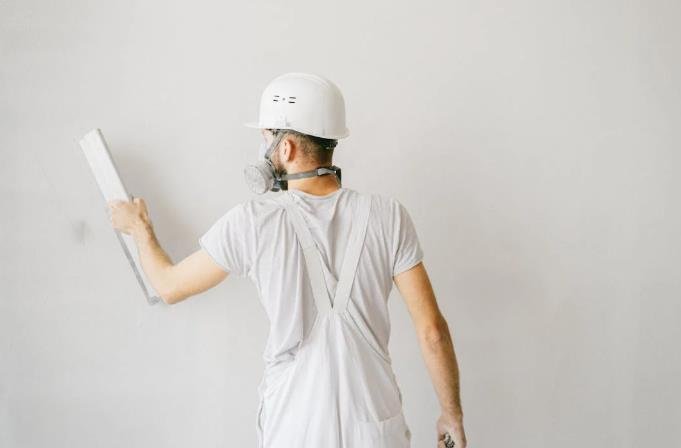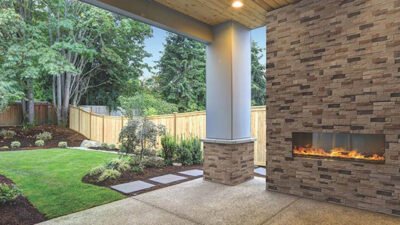The average homeowner spends thousands of dollars a year on emergency repairs. What’s interesting is that a large part of these costs could be avoided with better routine maintenance. Most people already have a checklist of tasks they repeat each year—changing filters, mowing the lawn, or cleaning gutters. But that list often misses key areas that quietly cause damage over time.
If you live in a place like Adamsville, AL, your home faces extra pressure from humidity, seasonal temperature swings, and weather changes. These conditions affect things like insulation, HVAC performance, and moisture buildup in places you rarely check. Many homeowners think they’re staying ahead of problems by doing the basics. But small things, like a slow leak or a failing appliance, can easily get missed and turn into bigger issues. Let’s take a closer look at what might not be on your list—but should be.
1. Your HVAC Might Need More Than a Filter Change
Most people remember to replace the air filter every month or two. That’s good, but it’s not enough. The rest of the system also needs regular care. Dust and debris can build up inside the unit. Ductwork can develop leaks. Even a small part that’s slightly off can reduce performance. Over time, this leads to higher energy use and more wear on the system.
If your home uses a heat pump, yearly maintenance becomes even more important. Catching small problems early keeps your system working the way it should. For example, hiring a professional who offers heat pump repair in Adamsville, AL before winter starts can help you avoid heating issues when temperatures drop. It’s better to be safe than stuck with a cold house in January.
2. Air Leaks Around Windows and Doors
Doors and windows aren’t always as sealed as they look. Even small gaps can let air escape or enter. That makes your heating and cooling system work harder, and it also affects how comfortable your home feels.
To check for leaks, stand near a closed window on a windy day. If you feel a draft, that’s a sign. You can also check for visible cracks or worn-out seals. Sealing gaps with weatherstripping or caulk is a quick fix. It takes only a few minutes but helps save energy and keeps your home comfortable year-round.
3. Don’t Forget Underneath Sinks and Inside Cabinets
Leaking pipes often start as small drips that go unnoticed. You won’t always hear them. And because they’re hidden behind cabinet doors, you might not see the damage until it’s serious. These leaks can lead to mold, warped wood, or pests.
Make it a habit to open every cabinet under a sink once a month. Use a flashlight and look closely for any signs of water, dampness, or musty smells. Also, run your hand along the base to feel for moisture. Catching a drip early can save you from having to replace floors or cabinets later.
4. Clean Behind Your Appliances at Least Twice a Year
The space behind your fridge, stove, and washing machine collects more than dust. You’ll often find pet hair, food crumbs, and lint. These buildups affect performance and may cause overheating.
Unplug the appliance first, then pull it away from the wall slowly. Clean the floor, baseboards, and any vent openings. A small vacuum or broom works well. If it’s a fridge, wipe off the coils too. When machines are clean and clear, they last longer and use less energy. It’s a simple task that many people skip.
5. Inspect Attics and Basements for Early Trouble Signs
Your attic and basement are the first places where moisture, pests, or insulation issues show up. But since people rarely go into these areas, the signs get missed. That’s a problem because early warning signs—like wet spots, insect droppings, or insulation clumps—often show up here before anywhere else.
Look in the corners and around vents or ducts. If you notice rust, water stains, or gaps in insulation, that means you need to fix the issue before it spreads. Even ten minutes every few months can help catch something you didn’t know was starting.
6. Check Caulking Around Tubs and Showers Regularly
The caulk that seals your tub and shower doesn’t last forever. Over time, it cracks, peels, or pulls away from the surface. When that happens, water slips behind the walls, leading to mold, mildew, and even rot. These problems grow quietly and can become expensive to fix.
Once every few months, inspect the caulk in your bathroom. If you see any gaps or areas that look worn out, remove the old caulk and apply a fresh layer. It’s a simple weekend task that makes a big difference. Keeping this barrier strong protects your walls and floors from water damage.
7. Test Your GFCI Outlets and Breakers
Ground Fault Circuit Interrupter (GFCI) outlets are designed to protect you from electric shock. You’ll often find them in kitchens, bathrooms, and outdoor areas. These outlets have “test” and “reset” buttons built in. Pressing the test button cuts power, and the reset button turns it back on.
It’s smart to test each GFCI outlet once a month. Just press the test button and plug something in to confirm it stopped working. Then reset it. Also check your circuit breaker panel for any strange sounds, smells, or breakers that trip often. Catching electrical problems early helps avoid fire hazards.
8. Watch for Wood Rot and Peeling Exterior Paint
Outdoor wood trim, decks, and steps face constant exposure to rain, sunlight, and humidity. Over time, paint peels and wood starts to break down. If water gets into the wood, it rots from the inside. This weakens the structure and invites pests.
Walk around the outside of your home a few times a year. Look for cracked paint, soft wood, or discoloration. Scrape and sand problem areas, then apply a fresh coat of paint or sealant. This keeps moisture out and your home looks clean and well cared for.
A good maintenance routine is more than a list of chores—it’s a way to protect your home and your budget. Many homeowners think they’re doing enough, but they often miss small tasks that prevent bigger issues. A loose seal, a slow drip, or a little dust may not seem like much, but they add up fast.
Take a second look at your checklist. Add the items we’ve covered here. Walk through your home and pay attention to what you usually ignore. Making these changes now can save you time, stress, and a lot of money later.


